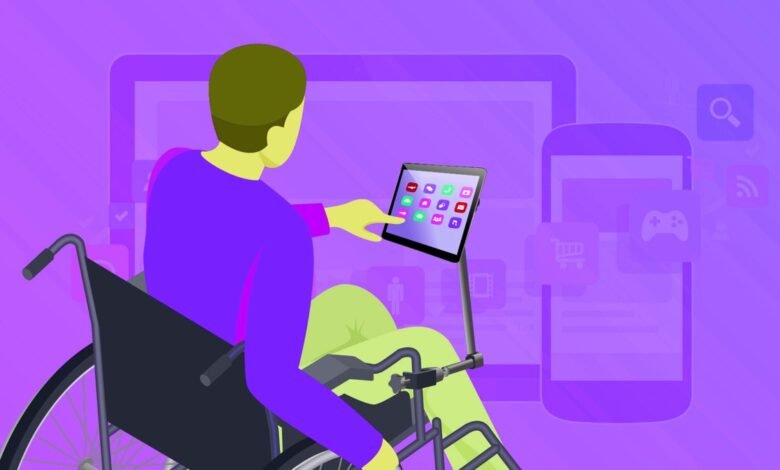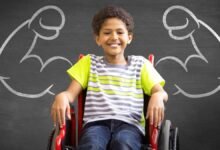Essential Products for Daily Living with a Disability

Living with a disability can present unique challenges in daily life, but fortunately, there are numerous products and assistive devices available to enhance independence and improve the overall quality of life. In this article, we will explore a range of essential products for daily living with a disability that can greatly benefit individuals.
Read More: Innovations in Disability Technology in 2023
Assistive Devices for Mobility
Wheelchairs
Wheelchairs are one of the most well-known and widely used mobility aids. They come in various forms, including manual and powered wheelchairs. Manual wheelchairs are self-propelled or can be pushed by a caregiver, offering flexibility and maneuverability. Powered wheelchairs, on the other hand, provide an electric-powered means of mobility, granting greater independence to users.
Mobility Scooters

Mobility scooters are another popular option for individuals with mobility limitations. These devices are electrically powered and offer a comfortable and convenient way to move around. They are particularly beneficial for those with limited upper body strength or endurance, providing a greater range of movement and independence.
Walkers and Canes
Walkers and canes are essential aids for individuals who require extra stability and support while walking. Walkers come in various designs, such as standard walkers, rollators, and knee walkers, offering different levels of support and maneuverability. Canes, on the other hand, are lightweight and provide balance assistance to those who have difficulty walking unaided.
Daily Living Aids
Living independently requires a range of daily living aids that assist with various tasks and activities. These aids aim to make daily routines more manageable and promote self-sufficiency. Here are some essential daily living aids:
Adaptive Clothing
Adaptive clothing is specifically designed to meet the unique needs of individuals with disabilities. It incorporates features such as Velcro closures, magnetic buttons, or elastic waistbands, making dressing and undressing easier for those with limited dexterity or mobility challenges. Adaptive clothing promotes independence and allows individuals to dress themselves with ease and comfort.
Eating and Drinking Aids
Daily activities like eating and drinking can be made easier with the help of specialized aids. Adaptive utensils with ergonomic handles or built-up grips provide better grip and control for individuals with limited hand strength or coordination. Drinking aids, such as spill-proof cups or straws with valves, reduce the risk of spills and make it more convenient for people with mobility issues to stay hydrated.
Personal Care Aids
Maintaining personal hygiene and grooming can be facilitated with a range of personal care aids. These may include long-handled reachers or dressing sticks to assist with reaching and grabbing items, sock aids for putting on socks without bending down, and specialized grooming tools like electric razors with ergonomic handles. These aids promote independence and enable individuals with disabilities to take care of their personal grooming needs effectively.
Communication Devices
Clear and effective communication is essential for individuals with disabilities to express themselves and interact with others. Various communication devices have been developed to assist those with speech or hearing impairments. Here are two notable examples:
Speech-to-Text Technology
Speech-to-text technology enables individuals with speech difficulties to convert their spoken words into written text. This technology utilizes advanced algorithms and voice recognition software to accurately transcribe spoken words in real time. It is particularly beneficial for individuals with conditions such as aphasia or vocal cord paralysis, enabling them to communicate more effectively in various settings.
Augmentative and Alternative Communication
Augmentative and Alternative Communication (AAC) refers to a range of tools and techniques used to support or replace traditional speech for individuals with communication challenges. AAC can include picture-based communication boards, communication apps on tablets or smartphones, or dedicated AAC devices with customizable symbols and pre-programmed phrases. These devices empower individuals to express their thoughts, needs, and emotions, fostering better communication and social interaction.
Technology and Gadgets
Advancements in technology have opened up new possibilities for individuals with disabilities, offering innovative solutions to enhance independence and accessibility. Here are some examples:
Voice-Activated Assistants
Voice-activated assistants, such as smart speakers equipped with virtual assistants like Amazon Alexa or Google Assistant, can be a valuable tools for individuals with disabilities. These assistants can perform various tasks upon voice command, such as setting reminders, playing music, answering questions, or controlling smart home devices.
Smart Home Devices

Smart home devices offer automation and control over various aspects of the living environment. Individuals with disabilities can benefit from features like smart lighting systems that can be controlled via voice commands or mobile apps, smart thermostats that allow temperature adjustments without physical effort, and smart security systems with remote monitoring capabilities. These devices enhance comfort, safety, and accessibility within the home.
Adaptive Computer Accessories

For individuals with disabilities who use computers or other electronic devices, adaptive accessories can greatly enhance usability and accessibility. Ergonomic keyboards and mice with specialized designs and adjustable features cater to different comfort and dexterity needs. Speech recognition software enables hands-free computer operation, while screen readers and magnifiers assist those with visual impairments in accessing digital content.
Emotional Support Products
Living with a disability can sometimes pose emotional and psychological challenges. Various products are available to provide emotional support and improve mental well-being. Here are a few examples:
Therapy and Comfort Animals
Therapy animals, such as specially trained dogs or cats, can offer emotional support and companionship. These animals can help reduce anxiety, provide comfort during stressful situations, and promote a sense of calm and happiness. Additionally, robotic therapy pets are also available as an alternative for those who may have allergies or are unable to care for live animals.
Relaxation Tools
Relaxation tools, such as weighted blankets, stress balls, or sensory fidget toys, can help individuals with disabilities manage stress and anxiety. These tools provide tactile stimulation and promote relaxation by engaging the senses. They can be particularly beneficial for individuals with sensory processing disorders or conditions like autism spectrum disorder.
Mental Health Apps
Mobile applications designed for mental health support can be valuable resources for individuals with disabilities. These apps offer features such as meditation exercises, mood tracking, guided relaxation techniques, and access to peer support communities. They provide convenient and accessible tools for managing stress, anxiety, and other mental health challenges.
Conclusion
Living with a disability doesn’t mean compromising on quality of life or independence. Essential products and assistive devices are available to support individuals in various aspects of daily living. From mobility aids and daily living aids to communication devices, home modifications, technology, and emotional support products, the market offers a wide range of solutions tailored to different needs. By embracing these products, individuals with disabilities can enhance their overall well-being, participate actively in society, and lead fulfilling lives.
Read More: 8 Best Strategies to Combat Depression, Stress, and Anxiety in Workspace
FAQs
Are these products covered by insurance?
While coverage varies depending on the insurance provider and policy, some assistive devices and products may be covered under specific insurance plans. It’s important to consult with your insurance provider to determine the coverage options available to you.
Where can I find these products?
You can find essential products for daily living with a disability at specialized medical supply stores, online retailers, or through healthcare professionals and therapists who can provide recommendations based on your specific needs.
How do I know which products are right for me?
Choosing the right products depends on your individual needs and preferences. It’s advisable to consult with healthcare professionals, occupational therapists, or disability advocates who can assess your requirements and guide you in selecting the most suitable products for your situation.
Are there financial assistance programs available for purchasing these products?
There are organizations and programs that provide financial assistance or grants to individuals with disabilities to help cover the costs of essential products. Research local disability support organizations, foundations, or government programs that offer financial assistance for assistive devices. They can provide information on eligibility criteria and the application process.
Can I try out the products before purchasing them?
Yes, in many cases, it’s possible to try out certain products before making a purchase. Medical supply stores or equipment vendors may offer demonstrations or trial periods for selected items. This allows you to assess their functionality, comfort, and suitability before making a final decision.


